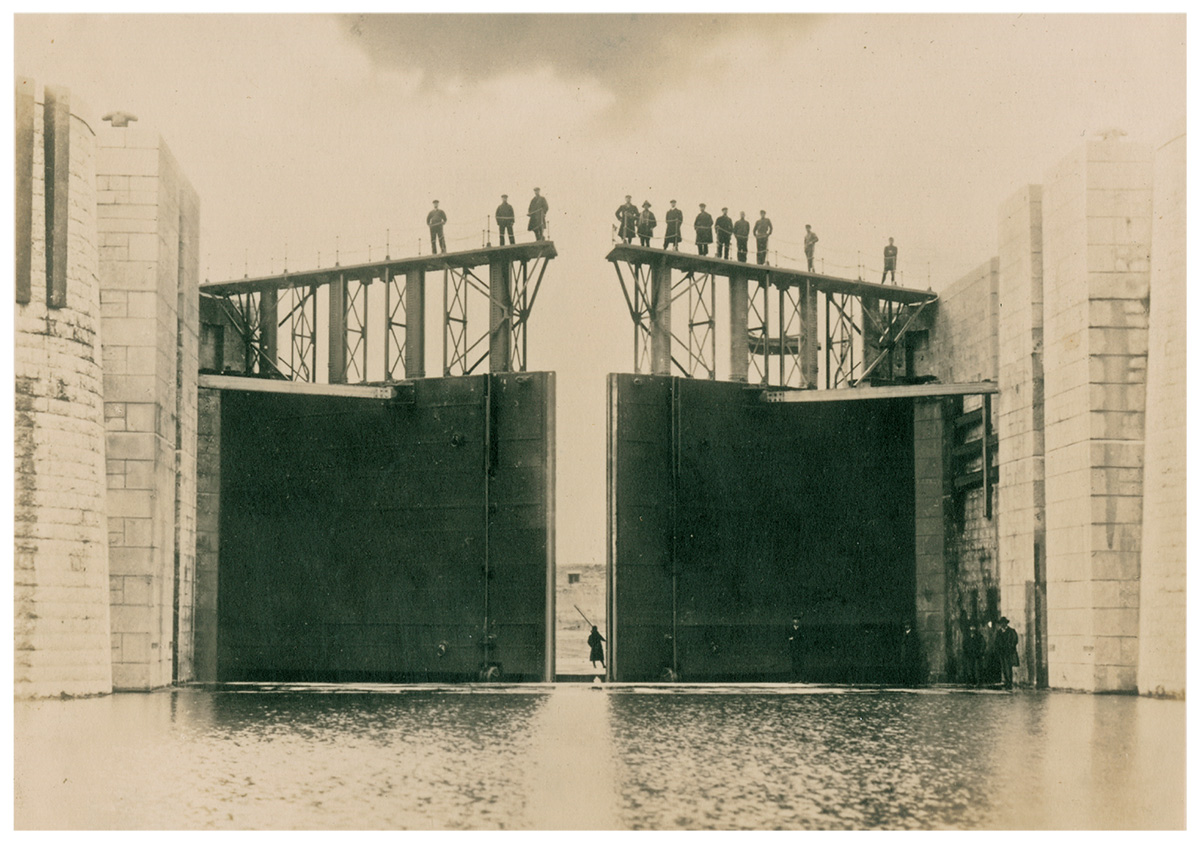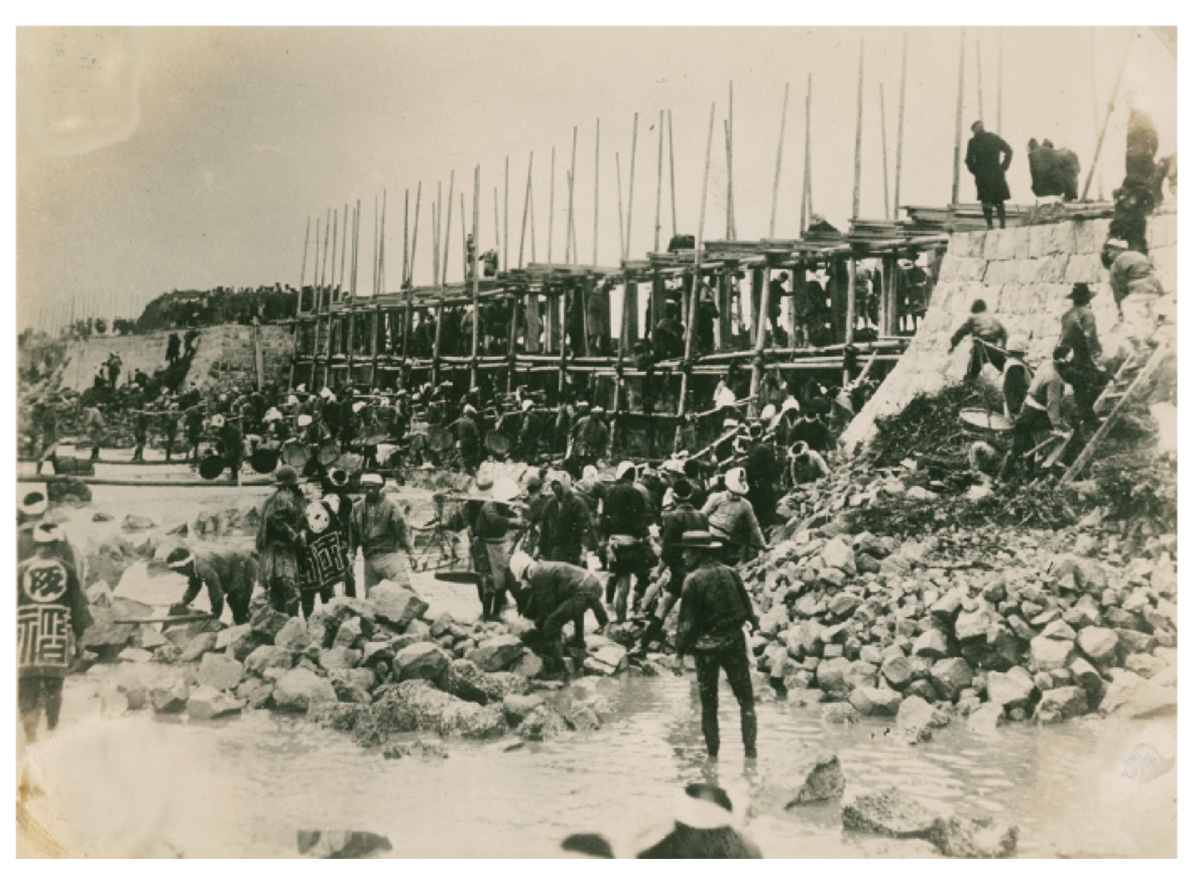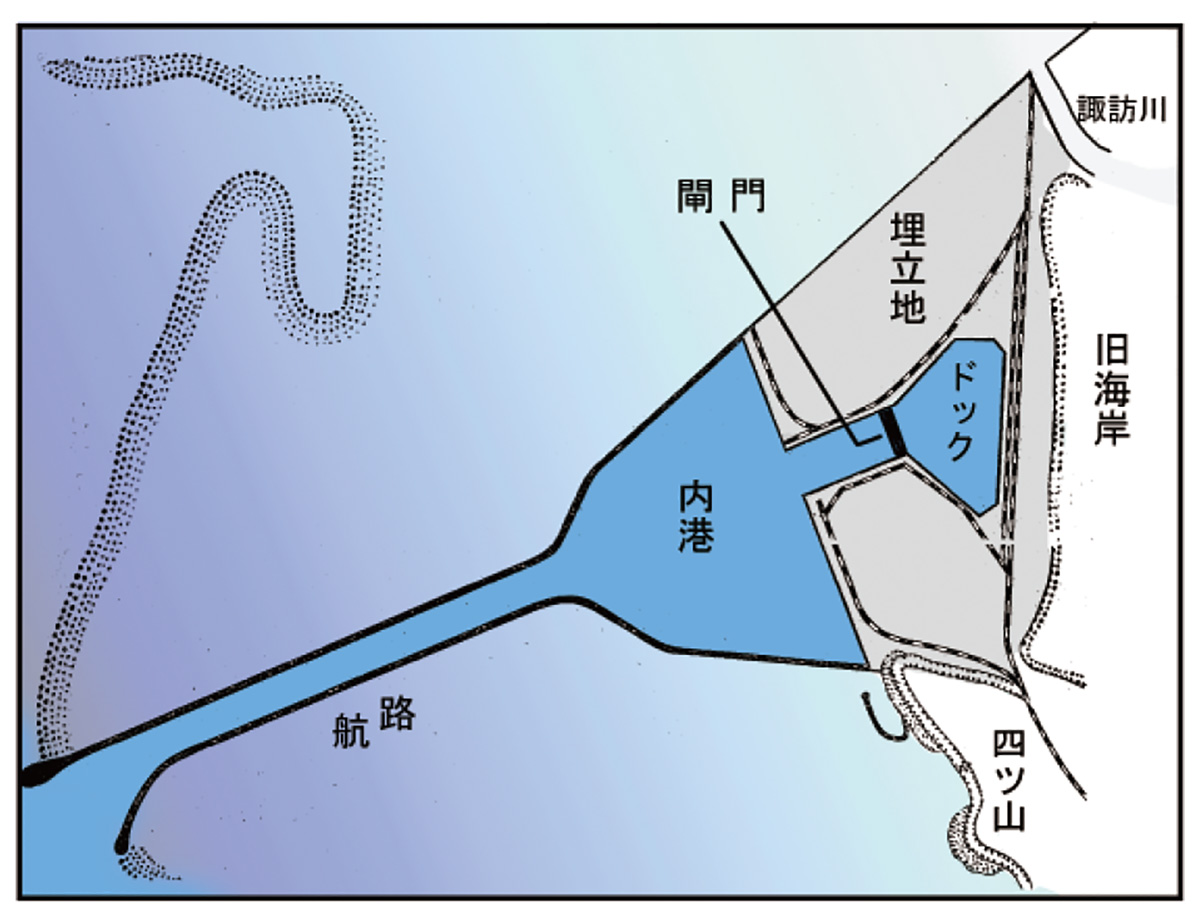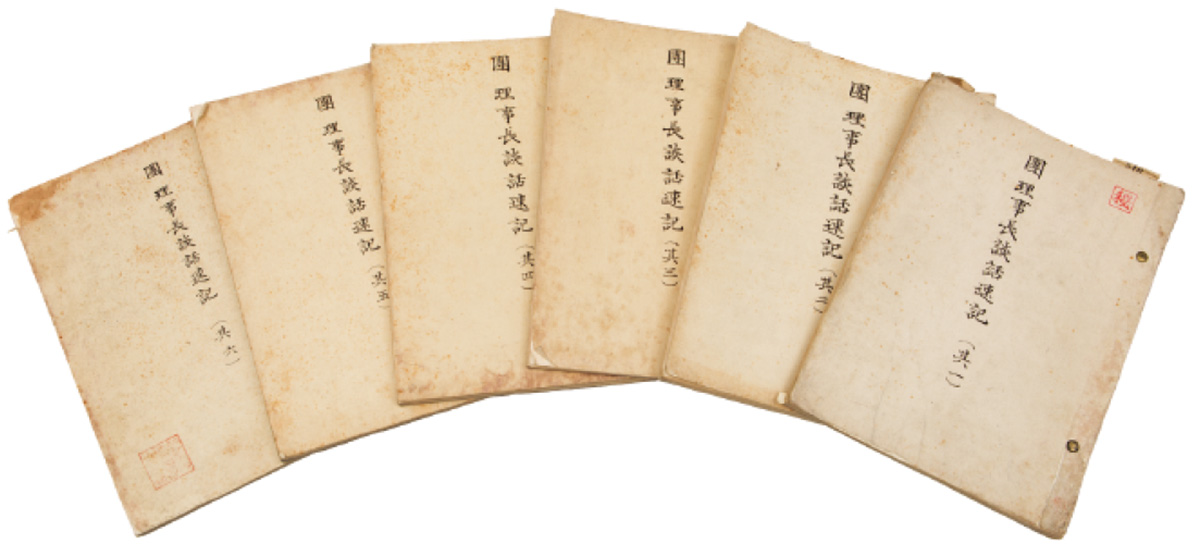35 Opening of Miike Port

Marine Transport of Miike Coal
The mouth of the Omuta River (Omuta City, Fukuoka Prefecture), where the Miike Coal Mine was located, faces the Ariake Sea, known for its shallow coastal waters. The range of the tide reached as much as 5.5 meters, making it difficult for ships to enter or leave except during high tide. Coal from Miike was thus transported on small ships to Kuchinotsu Port (what is now Minamishimabara City, Nagasaki Prefecture) at the tip of the Shimabara Peninsula. Coal unloaded at Kuchinotsu was then re-loaded onto Mitsui Bussan steamships and foreign vessels, much of it headed for export to Shanghai, Hong Kong and Singapore.
Plan for Construction of Miike Port
As development of the Miike Coal Mine progressed, a limit was reached on the amount of coal that could be transported from Omuta to Kuchinotsu, and the cost of re-loading the coal grew. Coal production at Miike was just under 500,000 tons in 1890, but by 1901 that had increased to about 900,000 tons. A facility was needed that could accommodate loading coal directly onto the steamships without being affected by the rising and falling of the tide.
In 1898, Dan Takuma, managing director of Mitsui Mining, accompanied by Makita Tamaki (→42) and others, visited ports in England, including Cardiff. Upon their return, Dan immediately succeeded in obtaining approval from Mitsui’s top executives for the Miike Port construction project. Construction began in 1902 with an enormous budget of three million yen.
Major Construction Phase
As seen in the figure below, this port construction project called for draining and reclamation of an area of about 1.2 million m2 from the Suwa River to the foot of Mount Yotsuyama, within which would be built a dock measuring 132,000 m2. In addition, outside the dock the plan was to create an inner harbor of 500,000 m2 and to construct a breakwater approximately 1.8 km long to create a navigation route to the open sea.
Work started in November 1902 with the construction of a stone embankment to create a tidal barrier around the planned reclamation area (→Fig. 35b). With the completion of the embankment two years later in May, approximately 1,000 workers were mobilized during low tide to close off the entire area at once. A mooring wall with a quay about 12 meters high was then built, and work proceeded on installation of a lock gate (→Fig. 35a) to maintain water levels, dredging of the inner harbor and navigation route and other tasks. In 1908, water was introduced into the dock, and on April 1, the port, named Miike Port, officially opened. This major construction project took more than five years at a total cost of 3.75 million yen, and required a cumulative total of 2.6 million workers.
The Significance of Miike Port
With the completion of Miike Port, it became possible to moor three ships of 10,000 tons each in the dock at the same time, and allowed coal to be loaded at any time regardless of tidal fluctuations. The mooring wall of the dock was also equipped with a pair of “Miike-type” fully mechanized high-speed coal loaders. This was a new type of machine commissioned from a manufacturer in England, and came to be known as a “Dan-Kuro Loader” after its designers, Kuroda Tsunema and Dan Takuma. In 1911, 347 ships entered the port (with a total tonnage of about 670,000 tons), and by the following year, the volume of coal loaded reached approximately 1.4 million tons.
“A One-Hundred Year Foundation”
While the construction of Miike Port was a major project essential to the development of the Miike Mine, according to Dan’s concept it was also designed with the future of the Omuta community in mind. In later years, Dan described this concept.
“Coal here will eventually be exhausted. However, by building a port, we can bring coal from other places even after it runs out here, and continue to do business. I do not know how many years this port will last, but I believe it will serve as a foundation for business over the next hundred years.” (→Fig. 35d)
At the official opening ceremony for Miike Port in April 1909, Mitsui Takakage, president of Mitsui Mining (and the eighth head of the Koishikawa family), made the following remarks reflecting Dan’s intentions.
“Although the export of coal was the primary objective behind the construction of Miike Port, it would bring us no greater joy than if it were to remain and serve society widely long into the future.”
Today, after more than 100 years, Miike Port, originally built for Mitsui, continues to fulfill its role as a hub for international logistics connecting Kyushu and Asia.

Miike Port opened in April 1908. The photo above shows the lock gates installed at the entrance to the Miike Port dock. The photo was taken just before seawater was introduced into the dock. After certain repairs and renovations, this lock gate-type dock, the only one of its kind in Japan, continues to be used today as it was then.
This lock gate, with two steel doors each weighing about 91 tons, opens and closes according to the tidal range, and is the most important piece of equipment for maintaining a water depth of approximately 8.5 meters in the dock. To ensure effective water sealing, the contact areas of both doors use a special type of wood from South America called Greenheart, which is resistant to pests and has a high density. At high tide the gates are submerged, so a passage is provided at a higher location. The width of the lock gate is about 20 meters, and was designed under the assumption that ships up to 10,000 tons-the largest at the time-would dock there.

In an era before heavy machinery, construction of stone embankments and quay walls, and excavation within the dock, all had to carried out by hand.


In this document, Dan Takuma looks back on his own career, Mitsui’s business and other subjects. Many of Dan’s words and philosophies that continue to be passed down to this day are based on this record.
